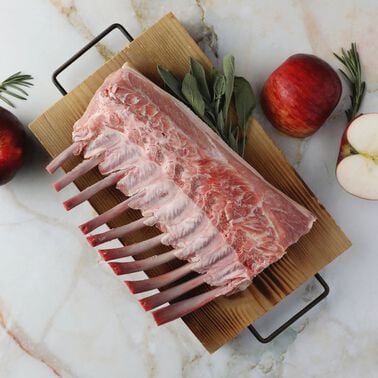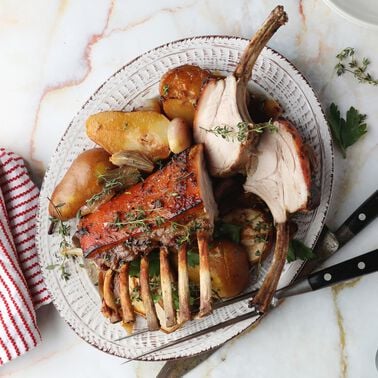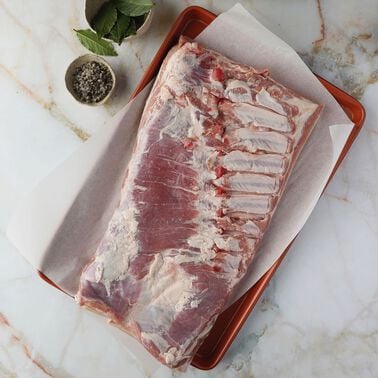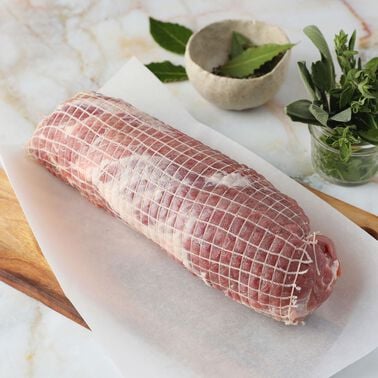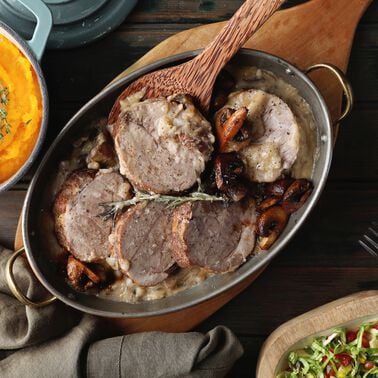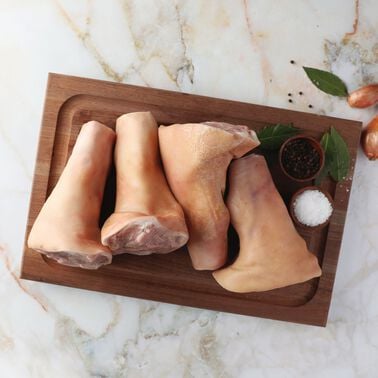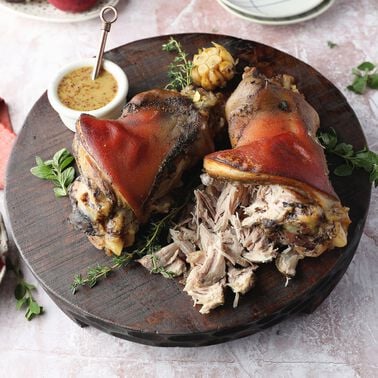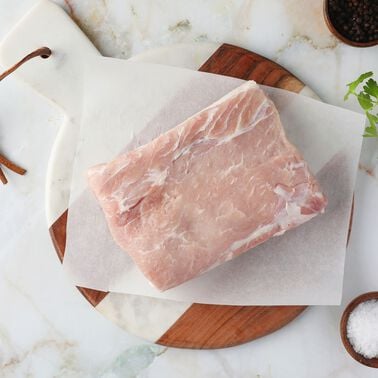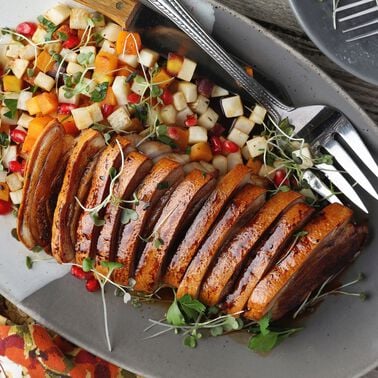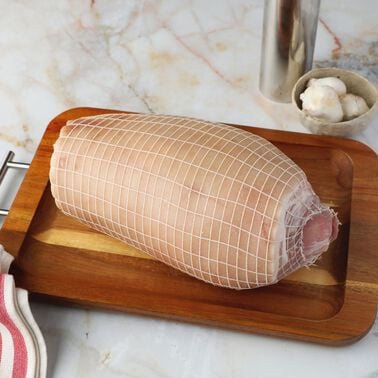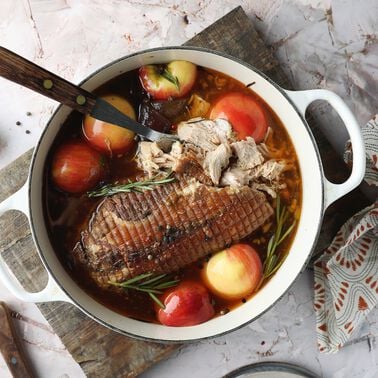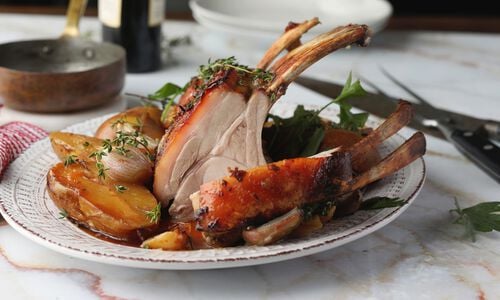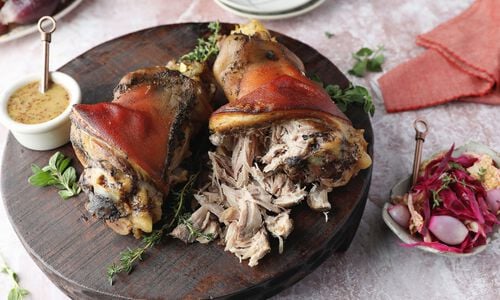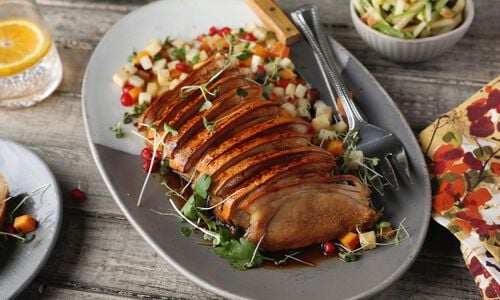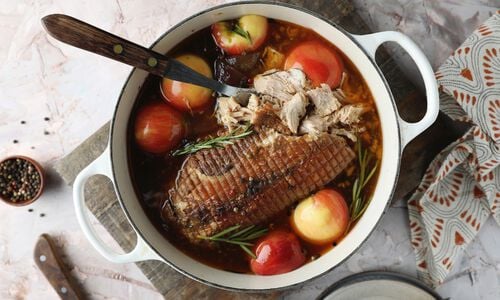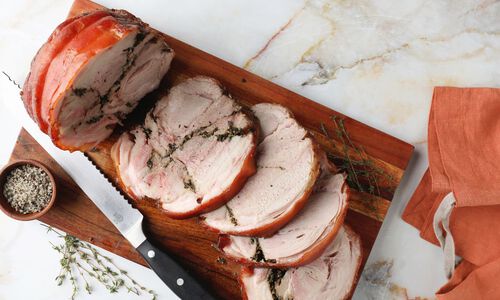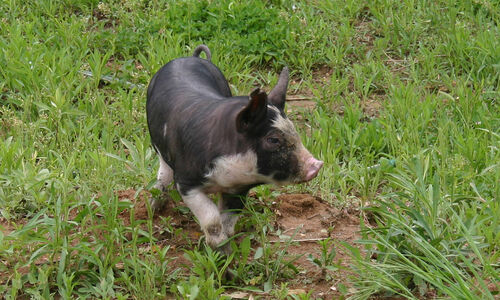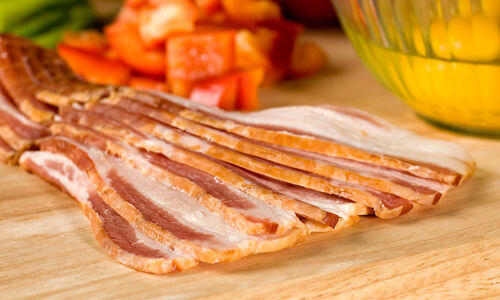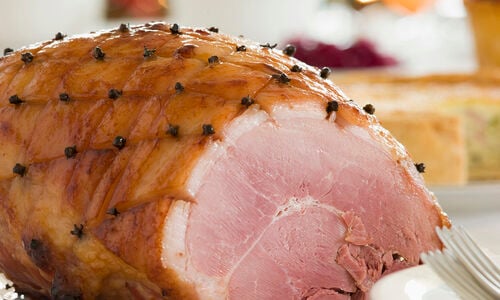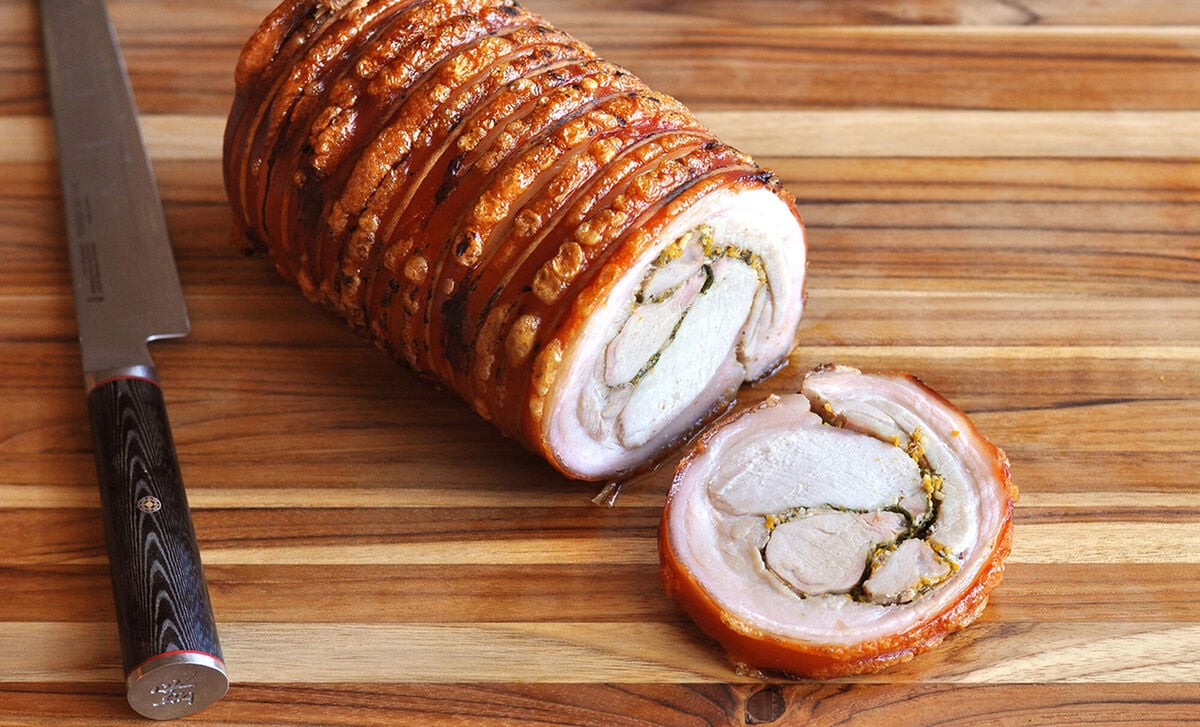
Milk-Fed Pigs
The milk-fed pig is a long-standing tradition on dairy farms. Excess milk, unwanted skim milk, and whey are common on such farms, and pigs are more than willing - even eager - to eat it all. This is why you so often see pigs on dairy farms. These natural farming partners also offer a tasty bonus: they turn all that unwanted milk into pork chops and bacon.
Farming Porcelet
Well acquainted with the European tradition of raising piglets on milk, our farmers in Quebec established a very specialized operation, unique in North America, to raise porcelet.
Combining tradition and technology, their farm raises Yorkshire breed piglets in spacious barns on nothing but milk. The proprietary, nutritionally-balanced milk formula is designed by animal nutrition scientists and fortified with vitamins, minerals, and a carefully balanced fat content. Think of it as a protein shake that a bodybuilder might drink to develop certain muscles. The formula is delivered at body temperature, and the piglets maintain a natural nursing rhythm.
The entire program is designed to put fat on the piglets in all the right places. This diet allows them to thrive for longer periods of time, growing larger than the average suckling pig, while maintaining tender texture. No antibiotics, hormones, or growth stimulants are ever used, and every care is taken to provide humane conditions for the pigs.
What Does Porcelet Taste Like?
They call it porcelet (poor-seh-lay), which to us means "the best pork ever." Because of all the care and the special milk diet, porcelet offers the most succulent pork imaginable, with a unique delicate flavor, and pale intramuscular fat that is creamy and firm. Even the tender suckling pig with 17% moisture content cannot compare to the 30% moisture content of porcelet. And because porcelet grows larger, there is more delicious pork to be enjoyed.
How to Cook Porcelet
Since porcelet is so tender, take care not to overcook it. You can braise the shoulder, shanks, or belly in milk, or wine, and herbs. Or you can slow roast it and finish under the broiler for a crackling finish. The rack can be butchered into pork chops and treated much the same as an ordinary pork chop, though the chops will be smaller and cook more quickly. Or roast the rack whole as we did in this Crackling Roast Porcelet Rack with Fennel & Apples recipe.
When working with porcelet, you will notice the tender and very pink meat, and the bright white layers of fat. This is a hallmark of the porcelet, as is the thin skin crisps up beautifully when roasted.
Our porcelet collar is a tidy little cut, perfect for home cooking. It can be braised or roasted for delectable results. The Italians cure this cut for the famous coppa, and you can certainly follow their lead.
When it comes to pork, the belly is the cut most likely to succeed. From smoky bacon to quivering roasted slices of porcelet, you will find this cut delivers great flavor and texture.
The hindshank is a cut that deserves attention. Slow cook it and blast at high temps for a little while to crisp the skin, and you will have tender shanks full of flavor.
Our fully cooked, artisanal porchetta is an ideal choice for any special occasion meal. Developed by a master charcutier, the recipe is simple and all-natural, with fresh herbs in the roulade. Because it's made with porcelet this porchetta is tender beyond compare. When roasted properly, the skin crisps to a glorious crackling finish that will draw gasps of delight from your guests.
